Stone, marble and metal statues are a common feature in gardens and parks around the world. Whether they are recreations of classical figures or contemporary abstract pieces, these artworks require care to ensure they do not degrade in the often turbulent conditions of the great outdoors. This is especially relevant for the fluctuating seasons and sometimes extreme weather faced in the United Kingdom.
 Above: a garden statue sheltered by the surrounding overgrowth of leaves and vines
Above: a garden statue sheltered by the surrounding overgrowth of leaves and vines
Not only do these materials have their own risks, they may also be fused together or be part of a mixed media piece. Textiles, plastics, fibreglass, paints and botanical elements may also play a part in the overall design, making the conservation and care of a statue require a multi-faceted approach. Whilst our conservation team is professionally trained in a wide variety of mediums, it may be a more challenging task for an owner or maintenance team. Having a detailed plan in place is key in reducing the risks a sculpture may face throughout the year.
This article will cover the types of statues you may come across and their materials, as well as the risks involved with outdoor exposure and the care techniques which can be implemented.
 Above: a stucco scene with a surface which has weathered over many years of exposure
Above: a stucco scene with a surface which has weathered over many years of exposure
Which risks do outdoor sculptures face?
Sculptures are some of the longest surviving artifacts, with detailed examples still standing from ancient civilisations and prehistory. Many of these have survived due to their suitability to the climate in which they were sculpted, often from local stone which was hardy to the environment. Metal statues, such as the bronzes from the ancient mediterranean, have also proved to be sturdy. However, these now museum-housed artworks have the professional conservation and care required to save them from contemporary contaminants and risks they may have faced in the modern atmosphere outdoors.
 Above: two 18th century allegorical sculptures facing pollution from city air
Above: two 18th century allegorical sculptures facing pollution from city air
Pollution in the air and rain now present challenges for all materials, no matter how long it may have survived in the past. It should be taken into account that many of the surviving pieces of sculptural art are from warm and dry climates, or have been discovered in at least partial shelter. The changing seasons of the United Kingdom present further challenges due to the fluctuation of summer heat and extreme cold, so this is the first aspect to take into account when thinking about preventative measures for a valuable or sentimentally important statue.
 Above: a stone memorial statue which is slowly deteriorating
Above: a stone memorial statue which is slowly deteriorating
Classical ideals have inspired a great deal of the sculptures in subsequent centuries, many of which are direct copies of the gods and goddesses of ancient Greece, or the thoughtful busts of emperors and philosophers. These can often be found lining the gardens of grand country homes and palaces, creating an inspirational arcadian theme. However, many of the reproductions may have been crafted from cheaper materials, which are faster to degrade under pressure from the outdoor environment. It is a common sight to see the worn down details of a long-standing figurative garden statue, which over time has faced the frost and lichen of a British garden.
Weather
Stone sculptures are highly susceptible to the British weather, including rain and snow which may penetrate the surface and create trapped moisture, destroying the internal stability. An extreme fluctuation in temperature may also cause gradual cracking and full breakages to occur. Painted or gilded statues may quickly lose this decoration, as this cracks and flakes away when the environmental conditions continuously shift between hot and cold, dry and humid.
 Above: various sculptures in different stages of deterioration due to old age and constant changes in environment
Above: various sculptures in different stages of deterioration due to old age and constant changes in environment
Salts and minerals
A major issue facing stone sculptures is soluble salts. This is primarily caused by the continuous drenching of rainwater and drying process which occurs, the porous nature of the material holds water inside these small cavities, creating a perfect location for salt crystals to eventually form. Soluble salts may lay dormant for many years before they become visually obvious. When the salt crystals erupt, drastic disturbances and breakages to the surface will occur and fast accelerate the decay of the sculpture.
 Above: a stone wall which has been damaged by salt and mineral disruption over a course of time
Above: a stone wall which has been damaged by salt and mineral disruption over a course of time
Plants and fungus
Botanical dangers may be lurking, as the growth of weeds such an ivy and moss may degrade the surface details, leading to the loss of a smooth texture which is often key to the visual impact of the artwork. Nearby plants may also cause damage by way of overgrowth, roots, or staining from pollen and petals.
Lichen is an extremely common problem on stone, this is a pale green or yellow growth created by a mixture of fungus and bacteria, often growing rapidly upon areas which provide enough sunlight, moisture and minerals.
 Above: examples of garden statues which have moss and lichen growth on their surfaces
Above: examples of garden statues which have moss and lichen growth on their surfaces
Pollution and acid rain
Pollution in the atmosphere may also lead to corrosion of the surface through the build up of toxic particles. Discoloration may be the first sign of this in some instances, however much of this may be invisible until deterioration begins to occur. Acid rain is commonly referred to in such instances, as it is the most predominant way of pollutant particles entering the pores of an artwork and causing severe harm. This may affect stone and marble, as well metals and all varieties of mixed media sculpture.
Accidental damage
A garden is a perfect location for sports and jovial activities, but this may not always be fun for the surrounding statues. Some sculptures may wear down due to the oils from hands touching them frequently and more direct accidents causing clear dents or breakages. Stray balls from footballs or cricket balls flying at sculptures may create more devastating damage, so sports in these areas should be avoided.
 Above: stone statues which have been stained by moss and lichen growth
Above: stone statues which have been stained by moss and lichen growth
Staining may also occur, such as drink splashes and oil spills from gardening equipment. If this is spotted, contact our team as soon as possible for professional cleaning treatments. During outdoor maintenance, a statue is also at risk of cuts and abrasions from blades or lawn mowers. Gardeners should take precautions when cutting nearby sculptures to avoid any collisions.
Metal corrosion
It is the internal corrosion of metal sculptures that creates the most common form of damage. Bronze sculptures are generally a thin shell, held by an underlying support. When this slim support corrodes, the surface is left weakened to dents and cracks. In the past cement may have been poured inside a bronze sculpture to give it further support, however this was later discovered to bring further dangers to the artwork as it now faces issues from both materials.
 Above: a bronze statue which has been slowly deteriorating outside
Above: a bronze statue which has been slowly deteriorating outside
Colour loss
Plastics and fibreglass can be extremely durable as part of a modern sculpture, but their pigments may face risks of fading, distorting or discolouration. UV rays can cause chemical reactions in the colours, causing them to fade or change, this may be the most obvious on a piece which is partially in shade as the darkened area will remain with bright original tones longer than those in direct light. White or light plastics may become dirty through rain or pollution, requiring a conservation appropriate cleaning method to safely remove the build up before it begins to damage or discolour the piece.
 Above: a colourful outdoor statue which may fade over time due to sunlight exposure
Above: a colourful outdoor statue which may fade over time due to sunlight exposure
Caring for outdoor sculptures
It is advisable to put together a treatment plan for your sculpture, noting which challenges it may face with each passing season. This includes the scheduling of any professional cleaning and maintenance it may require to stay free of fungal growth, botanical staining, pollutant build-up or general debris. Garden maintenance can also be instrumental in sculpture care, ensuring that there is no overgrowth of plants, weeds, or roots which may disturb the ground beneath the artwork.
The following is an example of notes for each season:
Summer
- Ensure that the sculpture is in a shaded or partially shaded location.
- Check for weed or fungal growth.
- Arrange for surface cleaning whilst the weather is warm.
Autumn / Winter
- Prepare shelter for rainfall in early Autumn.
- Cover before temperatures drop to avoid issues from frost, snow and ice.
- If possible, take the sculpture into storage.
Spring
- Uncover statue when rainfall and cold weather decreases in frequency.
- Garden maintenance to prevent weed and overgrowth.
- Arrange for surface cleaning before the summer season of display.
Covering your statue for wet and cold seasons is the simplest way to prevent deterioration from the climate. Better still, removing the statue to be placed in a clean and dry storage location for these seasons will help to avoid the risks entirely.
Putting a sculpture under partial shelter may help to avoid the issues caused by continuous moisture absorption from rainfall, as well as providing shade from direct sunlight. For a particularly weak and historic sculpture, you may want to consider full conservation treatment followed by indoor installation to prevent further deterioration altogether.
 Above: modern sculptures may use a variety of mediums, such as glass artworks by Chihuly
Above: modern sculptures may use a variety of mediums, such as glass artworks by Chihuly
Outdoor statue and sculpture restoration
Our team of trained conservators have knowledge of various materials, including those which are found in traditional and contemporary sculptures. This expertise allows them to approach the artwork with a tailored solution for cleaning, which is scientifically certain not to have any adverse side effects in the future.
Broken elements which have fallen away or statues with heavy cracking can be consolidated and stabilised with appropriate supports. This includes the reinstallation of any corroded internal structure, the strengthening of joins, or the replacement of loose limbs.
Areas of missing paint can in some circumstances be reapplied, if it is artistically and historically appropriate to do so. A sealant can also be applied to offer further protection from the elements.
Contact our team for further information
If you have a piece which could benefit from cleaning, stabilising, or any further professional conservation treatments, please contact our team for advice.
You can speak to us via email [email protected] or telephone 0207 112 7576

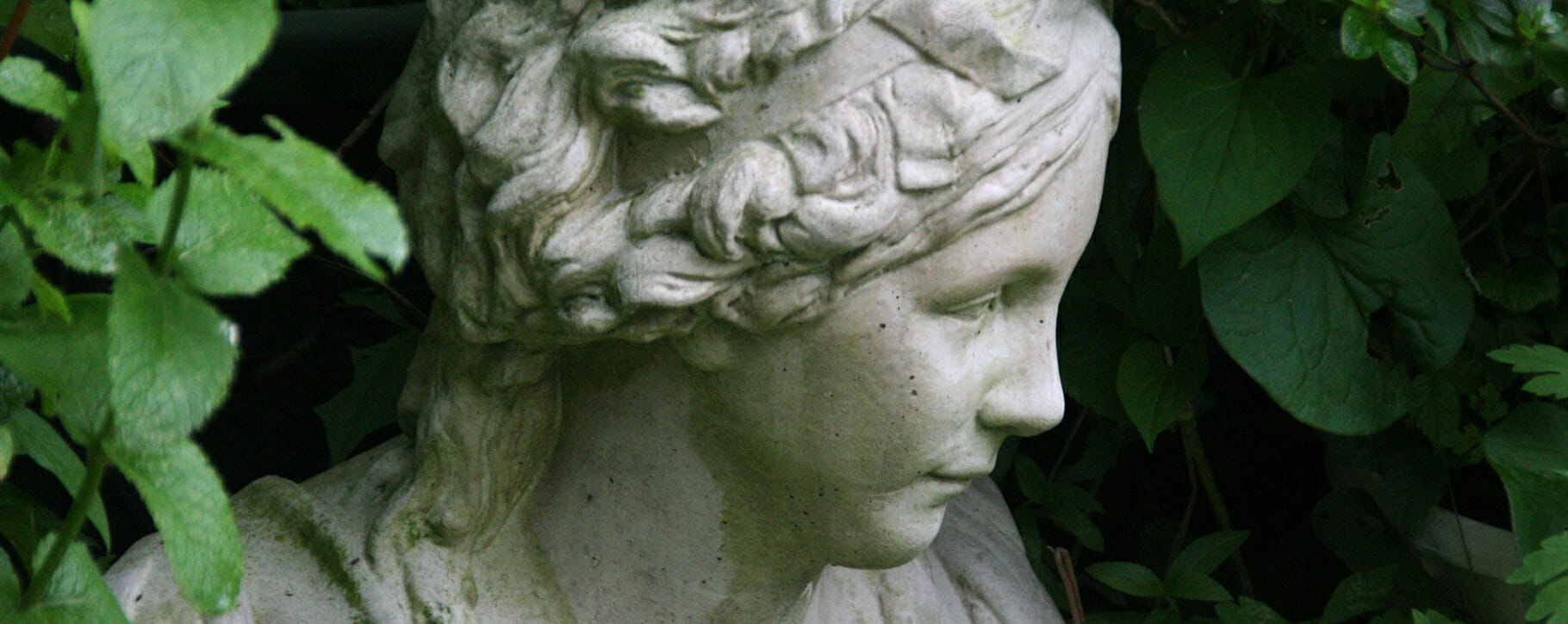
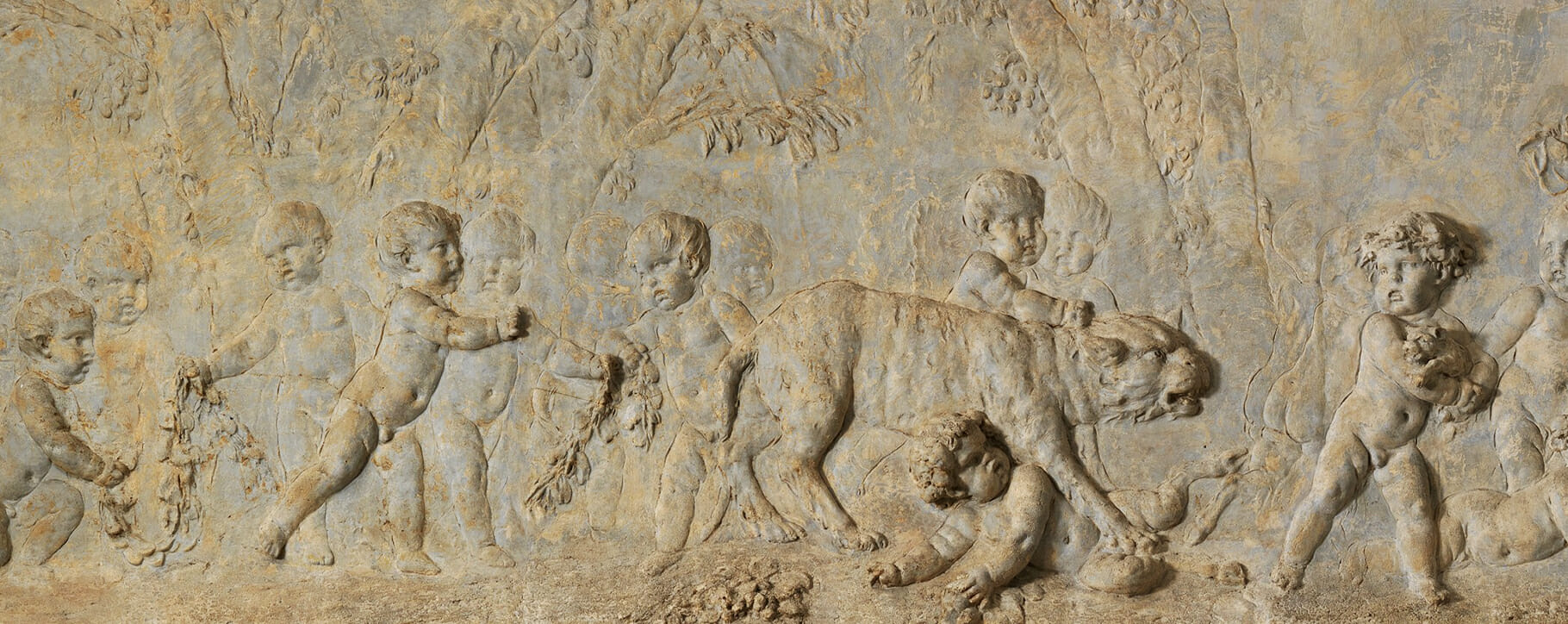 Above: a stucco scene with a surface which has weathered over many years of exposure
Above: a stucco scene with a surface which has weathered over many years of exposure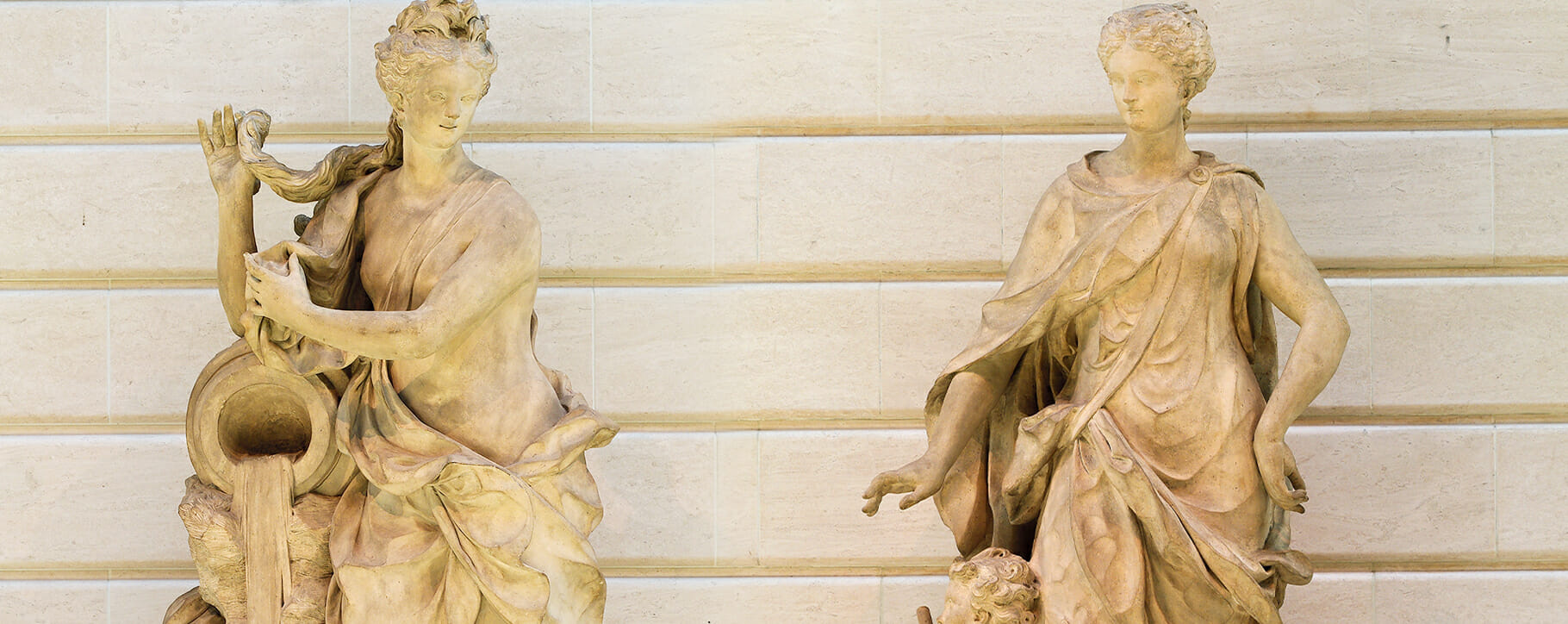 Above: two 18th century allegorical sculptures facing pollution from city air
Above: two 18th century allegorical sculptures facing pollution from city air Above: a stone memorial statue which is slowly deteriorating
Above: a stone memorial statue which is slowly deteriorating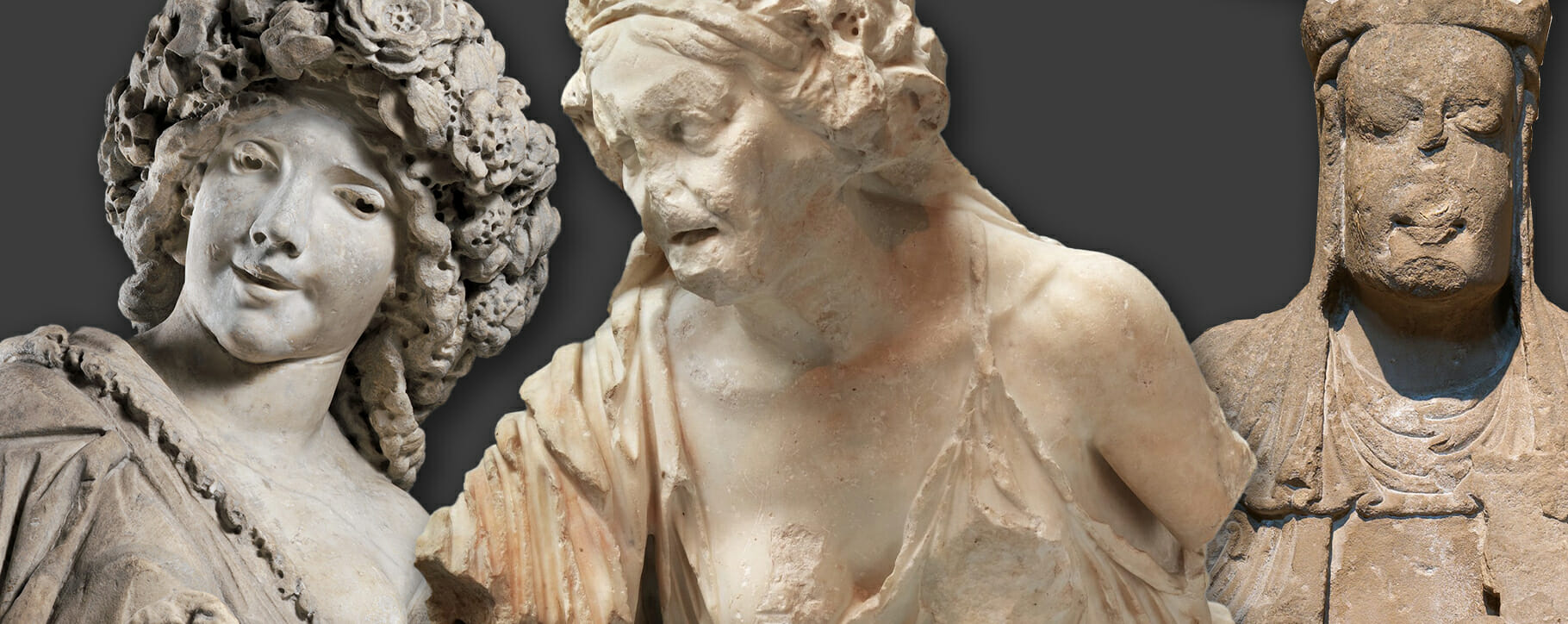 Above: various sculptures in different stages of deterioration due to old age and constant changes in environment
Above: various sculptures in different stages of deterioration due to old age and constant changes in environment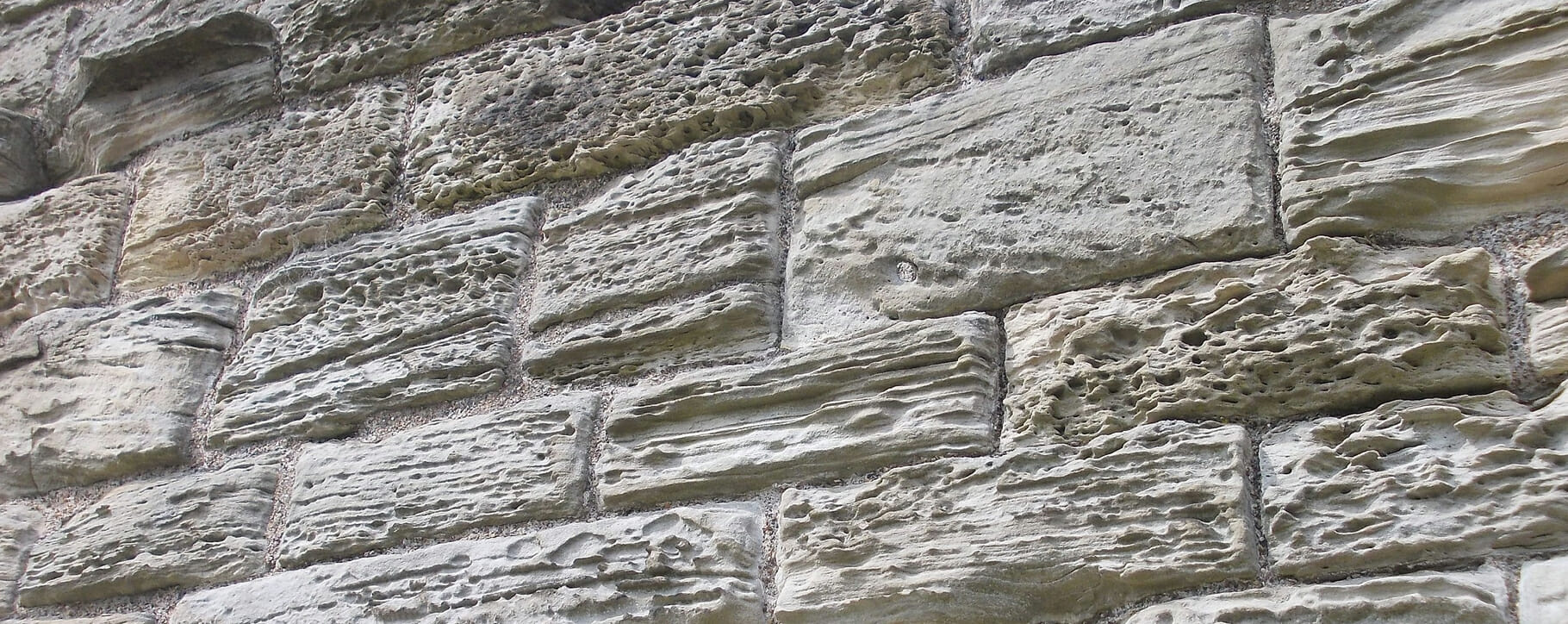 Above: a stone wall which has been damaged by salt and mineral disruption over a course of time
Above: a stone wall which has been damaged by salt and mineral disruption over a course of time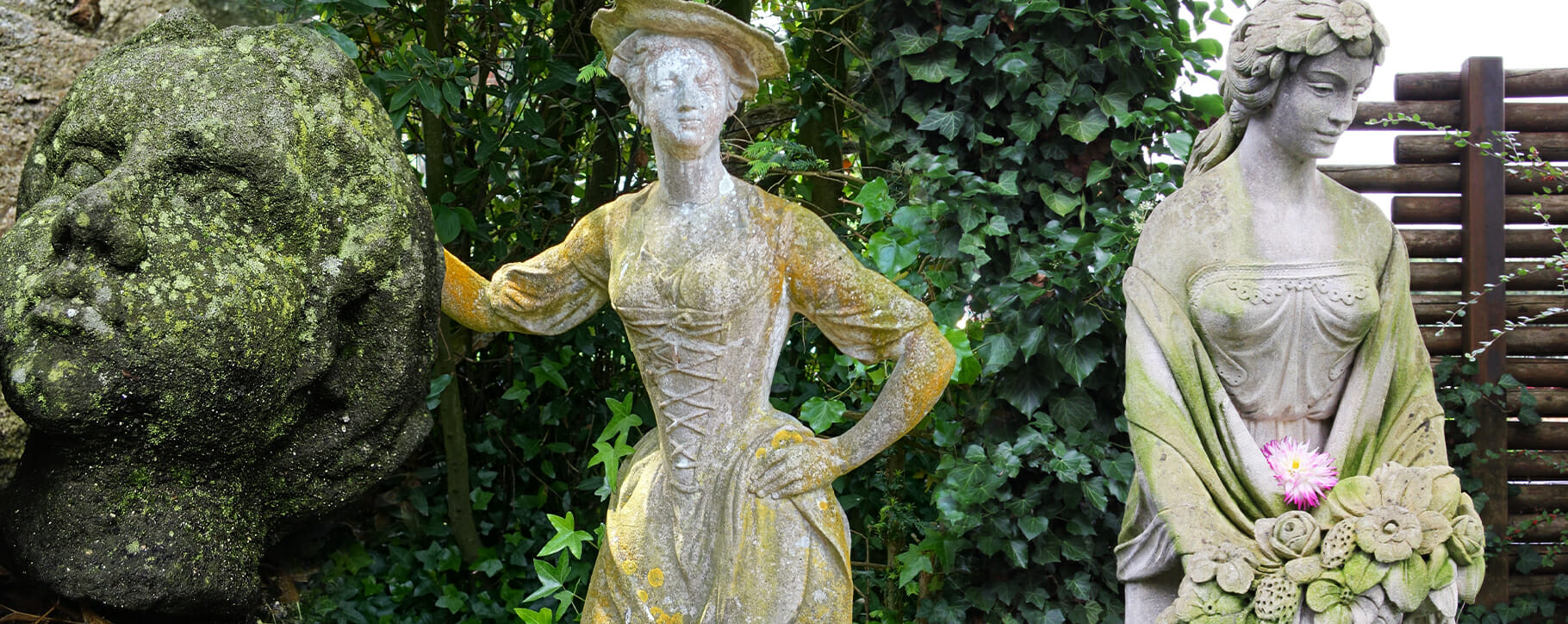 Above: examples of garden statues which have moss and lichen growth on their surfaces
Above: examples of garden statues which have moss and lichen growth on their surfaces Above: stone statues which have been stained by moss and lichen growth
Above: stone statues which have been stained by moss and lichen growth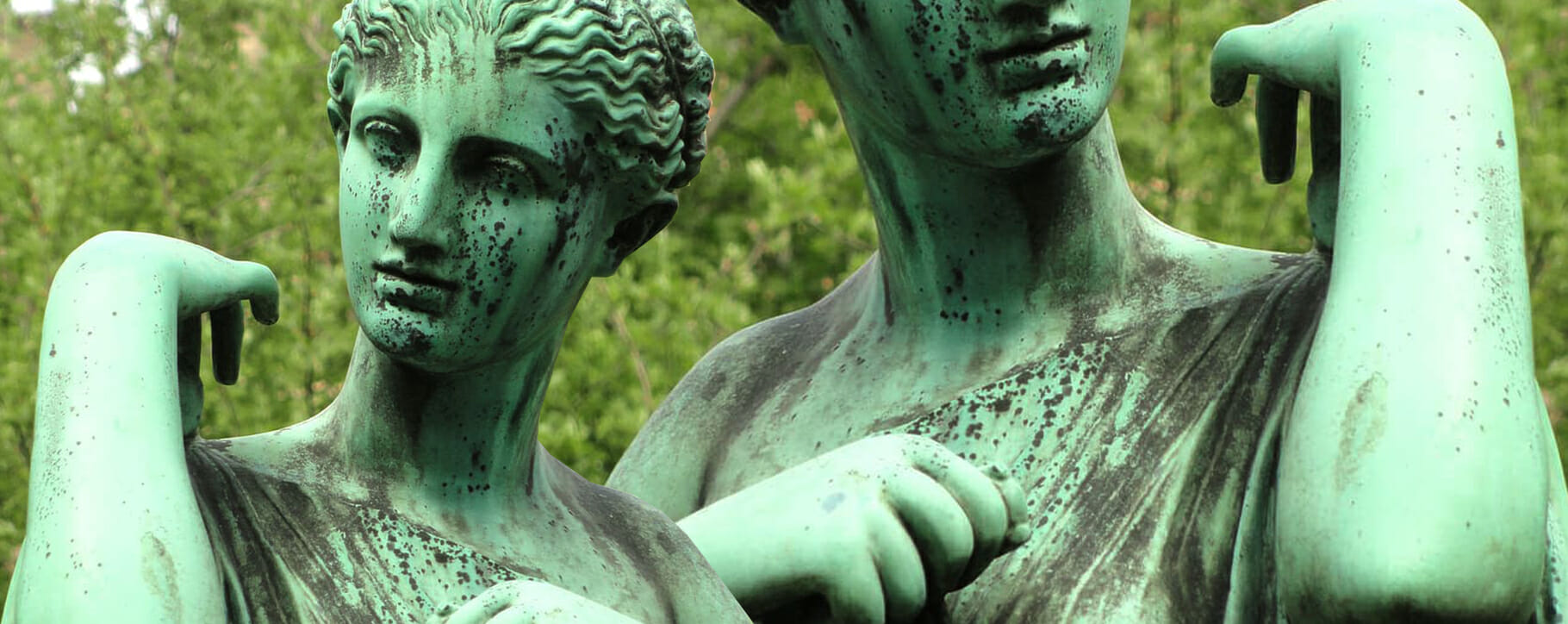 Above: a bronze statue which has been slowly deteriorating outside
Above: a bronze statue which has been slowly deteriorating outside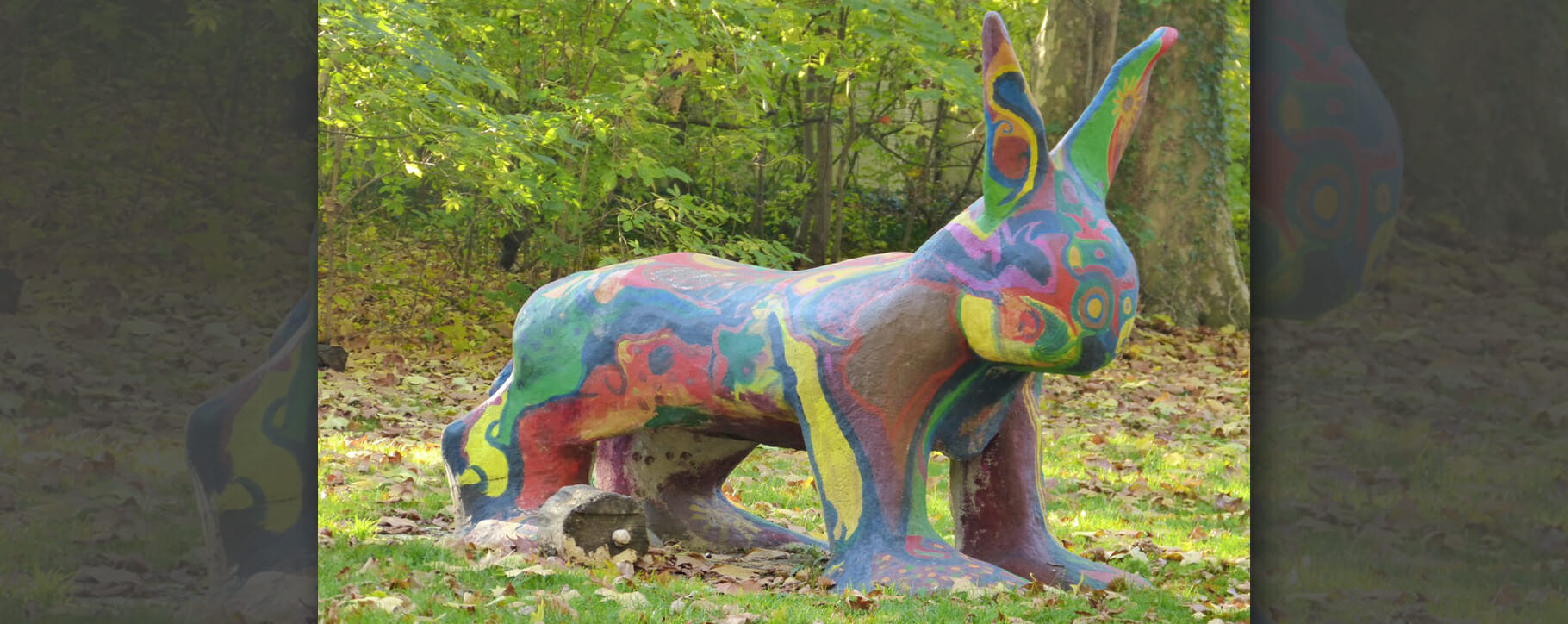 Above: a colourful outdoor statue which may fade over time due to sunlight exposure
Above: a colourful outdoor statue which may fade over time due to sunlight exposure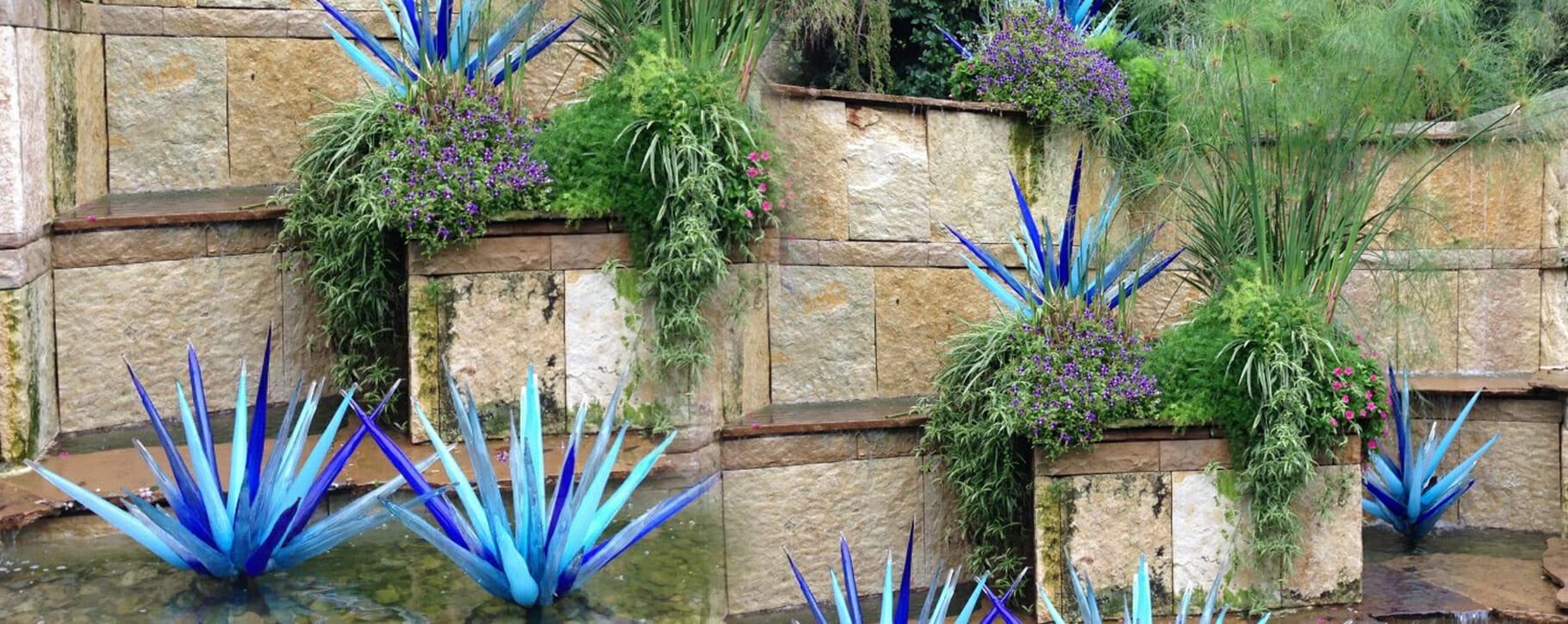 Above: modern sculptures may use a variety of mediums, such as glass artworks by Chihuly
Above: modern sculptures may use a variety of mediums, such as glass artworks by Chihuly 




